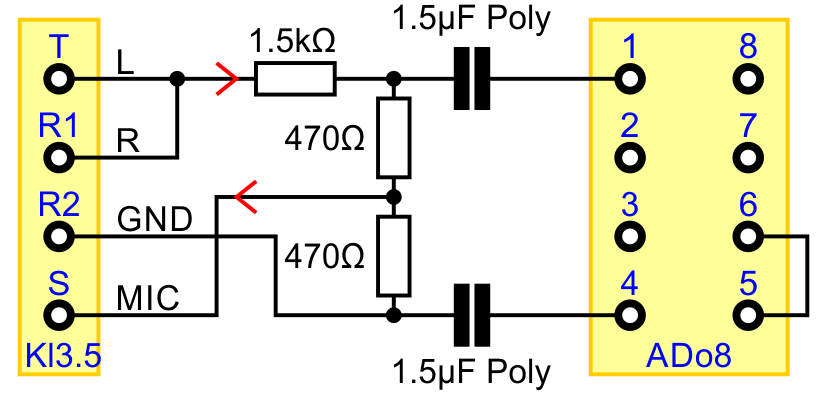-
Notifications
You must be signed in to change notification settings - Fork 11
HW_ED1000
TODO

In frequency domain ...

When sending a character the transmitter switches between the corresponding frequencies with the given baud rate.
In the old days a lot of electronic components were required to build a modulator and demodulator for Frequency Shift Keying (FSK). Today most of the work is done by software.
For our project, we use a (USB) sound card to play and record the carrier frequencies, and just 5 electronic components adapt the audio signal to the teletype ED1000 specifications.
With this USB sound card adapter the teletype can be connected to a Windows-PC, a Linux-PC, a Mac (not tested) or a Raspberry Pi (not tested). For Raspberries, a USB sound card is needed and available in online shops for about 10€. With PC or Laptops, their built-in sound card is equally suitable.

| Pin | Description |
|---|---|
| 1 | Line a |
| 2 | nc |
| 3 | nc |
| 4 | Line b |
| 5 | Bridge to 6 |
| 6 | Bridge to 5 |
| 7 | nc / Option: Paper-End-Switch |
| 8 | nc / Option: Paper-End-Switch |
The line wires are used to send and receive at the same time like a MODEM on phone wires.
The bridge between pin 5 and 6 is for signaling a connected plug. Caution: Some teletypes apply high voltages here!
Some teletypes use a switch (relay) on pin 7 and 8 to indicate "end of paper".
Consider using release packages for software installation: https://github.com/fablab-wue/piTelex/releases

-
Local use
-
i-Telex
-
Advanced Topics
-
Tools & Gadgets
-
TW39 (current loop)
-
ED1000 (FSK modulation)
-
V.10 (TeKaDe FS200, FS220)
-
SEU-M-board based
- with Austrian AGT (Ö-AGT, current loop)
- as replacement for SEU-B card inside LO2000, LO2001, LO3000